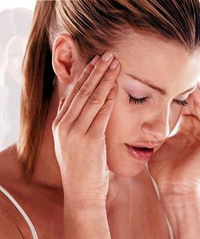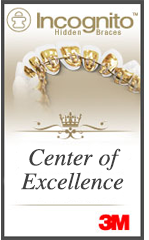TMJ-TMD Treatment

Many people who suffer from symptoms such as headaches, earaches, tenderness of the jaw joints or muscles, popping or clicking of the jaw, or dull aching facial pain may share a problem. These people may suffer from a family of problems related to the jaw muscles and the jaw (temporomandibular, or “TM”) joint. These problems are often referred to as TMJ or TMD disorders. The muscles and joints may not function properly, resulting in cycles of pain and spasm. The cause of some TM disorders are not well understood. Because of this, there are varying opinions about diagnosis and treatment of these conditions, some of which are discussed below.
How The Chewing Muscles and Jaw Joints Work
The structures that make it possible to open and close the mouth are very specialized and work together when you chew, speak and swallow. These structures include muscles and ligaments, as well as the bones and cartilage discs which make up the TM joints. The TM joint is one of the most complex joints in the body, especially because there are two of them working together. They are capable of making many different types of movements, including combinations of hinge and gliding action. The cartilage disc acts like a shock absorber between the ball (condyle) and socket (articular eminence). A number of muscles allow you to open and close your mouth. They also control forward, backward and side-to- side movements of the lower jaw. Both joints also are involved in these movements. Each of these joints has a disc between the ball and socket. This disc cushions the load while enabling the jaw to open widely and to move in combinations of hinge and gliding movements. Any problem that prevents this complex system of muscles, ligaments, discs and bones from working together properly may result in a TMJ disorder.
Causes of TM Disorders
When jaw muscles and joints do not work properly, the muscles
will often go into a spasm (cramp). This spasm can become part
of a cycle that results in tissue damage, muscle pain or tenderness,
increased spasm and progressive tooth wear.
While some cases of TM disorder may have clear-cut causes such
as trauma, arthritis, or severe stress, most are due to a combination
of factors. Bite alignment (the teeth) and jaw alignment (bone)
can also be contributing factors. The components of the
jaw joint can also become dislocated, leading to problems such
as clicking, popping, or even getting “stuck”. The
degree and frequency of these symptoms will vary among individuals.
Oral habits such as clenching or grinding the teeth (bruxism) may develop as a response to, stress, tooth alignment, jaw alignment, or as part of sleep disorder. You may not be aware of nighttime grinding, but you may catch yourself clenching the teeth during the day. These habits can exhaust the muscles and cause them to go into spasm. The spasm causes pain which in turn causes more spasm. In time, persistent muscle problems may affect the joints themselves, and a complex cycle of pain and improper function will be set up.
It is important to note that while many of the above factors are believed to cause TM disorders, the exact causes can vary and sometimes cannot be determined.
Signs and Symptoms of TM Disorders

TM disorders have many signs and symptoms. Some of the most common:
- Pain in or around the ear or a feeling of fullness in the ear.
- Tenderness or tightness of the jaw muscles.
- Clicking or popping noise when one opens or closes the mouth.
- Jaws that “get stuck", “lock", or “go out.”
- Pain brought on by opening the mouth, chewing or yawning.
- Certain types of headaches or neckaches.
Your dentist can recommend a course of treatment by taking a complete history, conducting a clinical examination, and by taking appropriate X-rays or other diagnostic tests. To the extent that the causes of your TM disorder can be identified, proper diagnosis is an important step before treatment. It can save time and money by ensuring that you receive the treatment appropriate for your particular problem.
Treatment for TM Disorders
Treatment and Management of TM disorders vary, based on your individual diagnosis. The dentist may recommend treatment by Phases. This step-by-step plan is in your best interest because only conservative corrective treatment may be needed. TMJ treatment begins with the most conservative therapies.
Part of the clinical examination includes checking the jaw area for tenderness, clicking, popping or difficulty in jaw movement. A detailed history of the TM problem is also important to the evaluation. If pain and other symptoms are present, a more involved treatment may be considered. Although the specific therapy recommended for you may not be described below, your dentist may consider the following:
- Use of an Occlusal Splint or Bite Orthotic to provide relaxation and re-alignment of the jaw muscles, while minimizing the harmful effects of clenching or grinding of the teeth.
- Reduction of muscle spasm and pain by applying moist heat or prescribing medication such as analgesics or anti-inflammatory drugs
- Relaxation techniques to help control muscle tension in the jaw. Your dentist may suggest training in these techniques to help reduce stress, tooth grinding and/or clenching.
- Many cases of TMD may require a combination of treatments.
Your dentist and other health professionals who provide treatment for TM disorders, care about your health and comfort. Discuss your concerns openly with them. In many cases the pain, headaches and other symptoms associated with TM disorders can be successfully and readily managed.






